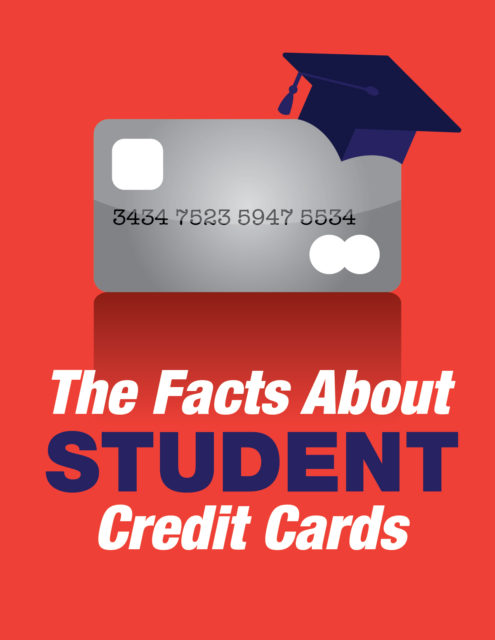The Facts About Student Credit Cards

College is full of “firsts.” For most students, it’s the first time living away from home and managing money. It’s also the first time a lot of students will be introduced to credit cards.
Credit card companies often set up tables and offer incentives like free t-shirts to get students to sign up. Without thinking or doing research, students willingly sign up and consider their new plastic card as free money. As a result, young adults can find themselves in debt, fast.
Student credit cards aren’t all bad, however. They give young people an opportunity to build good credit which can come in handy if a job or future landlord asks for a credit report. In order to understand how to use it properly, students need to understand all the facts.
The Good
When used properly, credit cards can help build good credit which can be beneficial for future purchases, like buying a house. It can also be a useful money management tool that can track purchases and make ends meet until payday or the next check from your parents.
According to Forbes, the average interest rate for a student credit card falls in the 7-16% range. In addition, special promotions like 0% interest for 6+ months, reward bonuses, and no annual fees are often part of the student credit card package being offered. Some cards also offer rewards that can give students a percentage back on restaurants, books, movies, etc. Make sure to research several cards before signing up.
The Bad
More often than not, credit card companies bid on spaces at campuses across the country. The highest bidder gets a table and is usually who you see when you are on campus. Be aware that your school chose the lender based on how much they paid, not on how beneficial they would be for students. Make sure you actually take the time to look around and find the best deals available instead of signing up on the spot on campus.
In addition, college students are maxing out their credit cards on tuition, books, supplies and other school orientated purchases. Because of its convenience and short lived 0% interest rates, students will stack up expenses on their credit cards before looking for other financial options like Pell grants or TAP.
The Ugly
In a study conducted by Sallie May in 2009, nearly half of undergraduate college students had four or more credit cards, and carried an average debt of $3,173. This is a large bill for a college student, especially one that has little experience managing money. In addition, it can be a struggle to pay minimums when handling several different cards.
Being late or coming up short on a payment can affect your interest rate severely. In addition, late fees can be added to your balance, negatively impacting your credit score. This will make it harder to get a mortgage, car, or additional credit cards in the future.
In the end, credit cards can be a useful tool for students when used correctly. When shopping around look for cards with rewards, cash back options, and low fees and interest rates. Once you get a card, remember to use it smartly. Use educational financial resources to pay for school related items when you can, keep unnecessary spending on your card to a minimum, and refrain from getting multiple cards.
